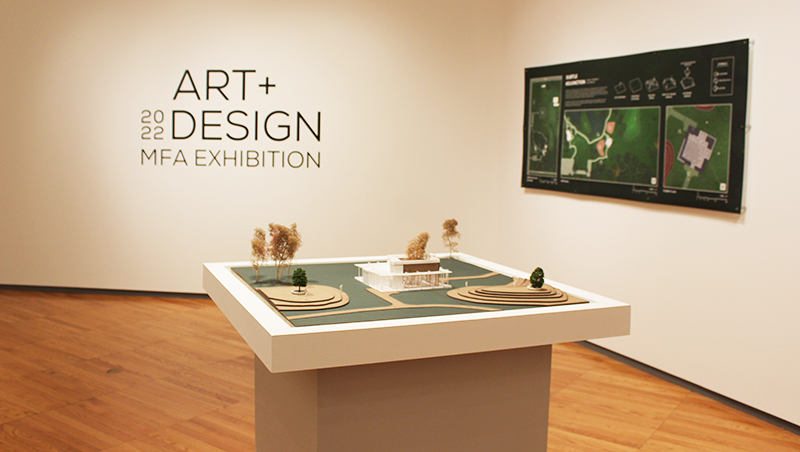If you’ve been asking yourself if you should see the 2022 School of Art + Design MFA Candidates Exhibition, the answer is yes. But the more interesting question is not if, but why. At first glance, this year’s exhibition may seem widly diverse in its offerings. But if you explore thoughtfully, which I hope you will, you will soon discover that the throughline is itself a question: What if? As you walk from one well-curated gallery installation to another, you experience each artist and designer’s voice, each response to this far from simple question. From a mind-blowing array of seriously smart tech to installations which investigate the ways repetition and reassemblage alter our sense of personal boundaries to the semiotic construction and deconstruction of gender, this exhibition asks us to consider both what if we could be and do better, and what if we have been wrong.
Walking through the industrial design installations I found myself thinking of the World’s Fair with its Grand Expo filled with glimpses of the future. Industrial designers are problem solvers offering solutions that are elegant, creative, and user-friendly. This year’s ID students did not disappoint. Among this year’s offering are the Moobus, by Hanyu Zhu, a convertible vehicle that is adaptative to all bodies, and flexible enough to accomodate a variety of travel needs.
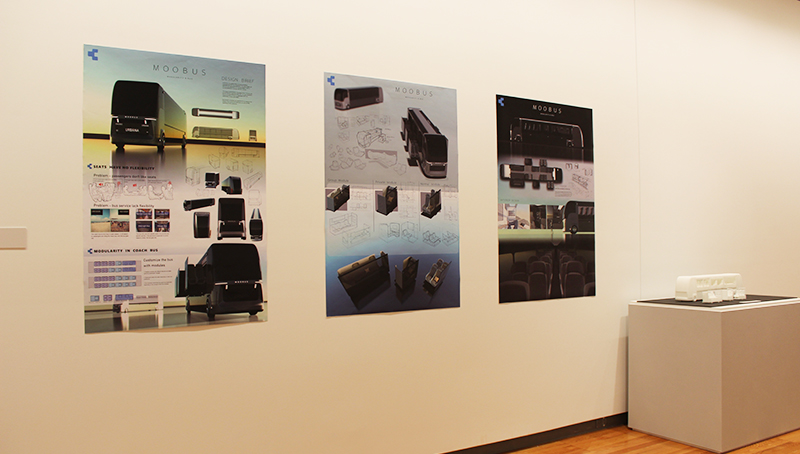
Photo by Debra Domal.
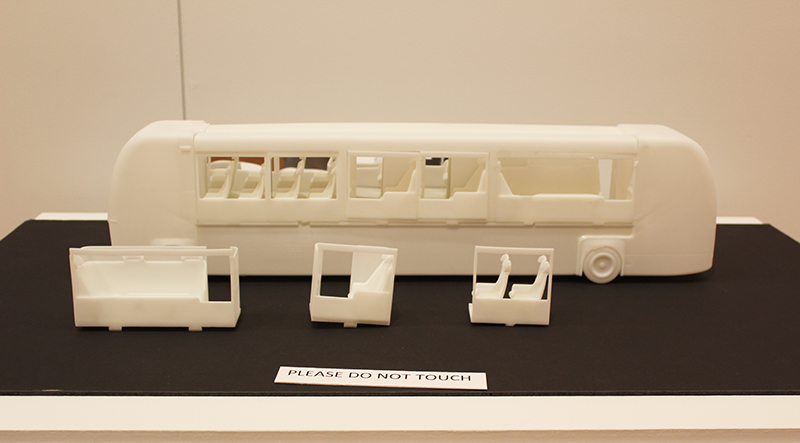
Photo by Debra Domal.
For this reviewer, seeing the prototype, often shown in its various iterations, is the real magic. The marketing materials throughout were eye-catching and communicated their value propositions well. However, to stand before an object that was recently nothing but an idea, is a rare and inspiring opportunity. A fine example is Zhaofu Zhang’s haptic virtual reality controller shown below.
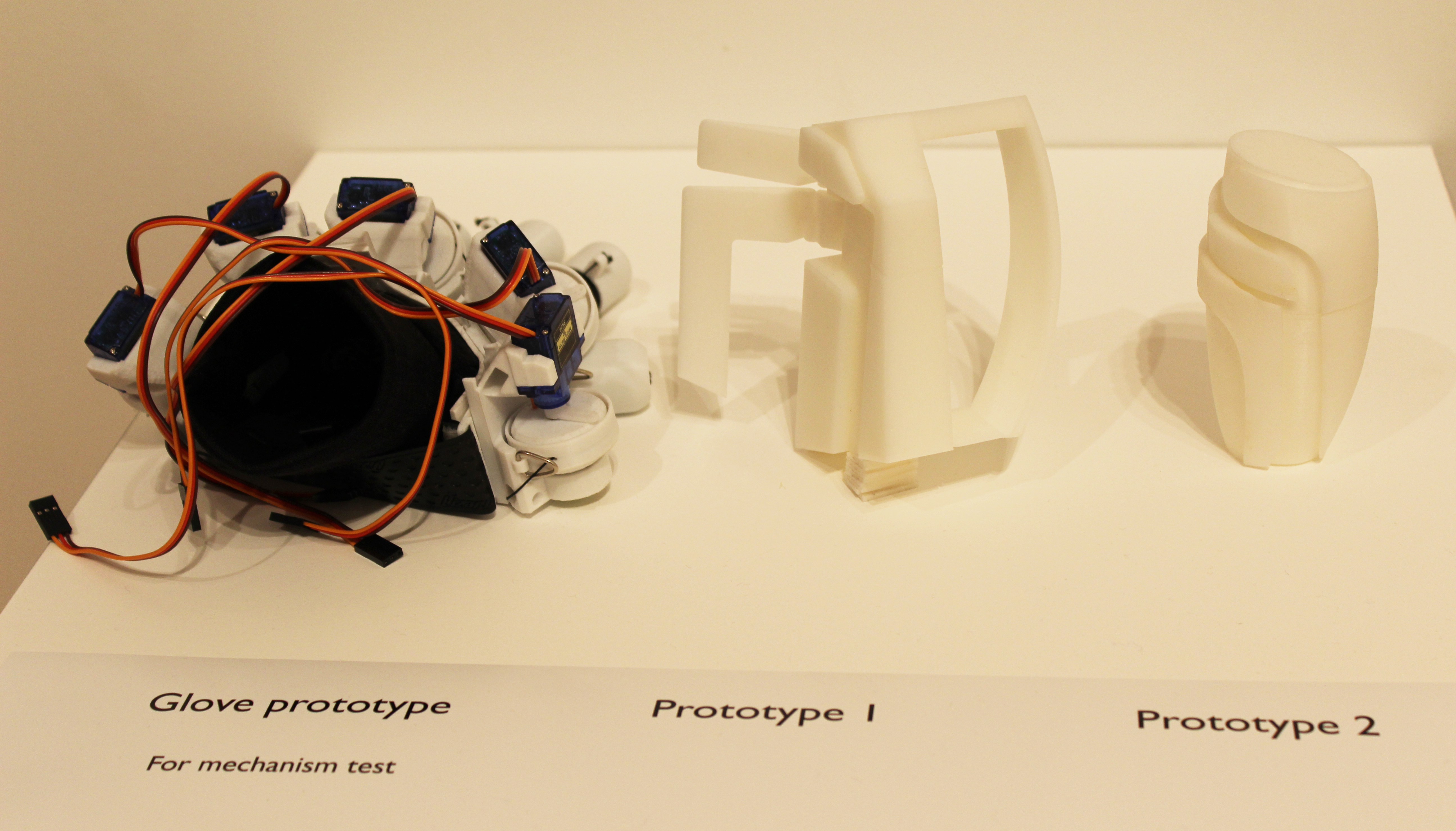
Photo by Debra Domal.
Along with the Moobus, don’t miss the Adora Smell Camera, which, dream of dreams, captures our experience of smell. Hold onto your flavor profiles foodies. You won’t want to miss this.

Photo by Debra Domal.
Those of us who are overscheduled and overwhlemed (in other words most if not all of us) will appreciate Shuning Zheng’s Timeit time tracker.
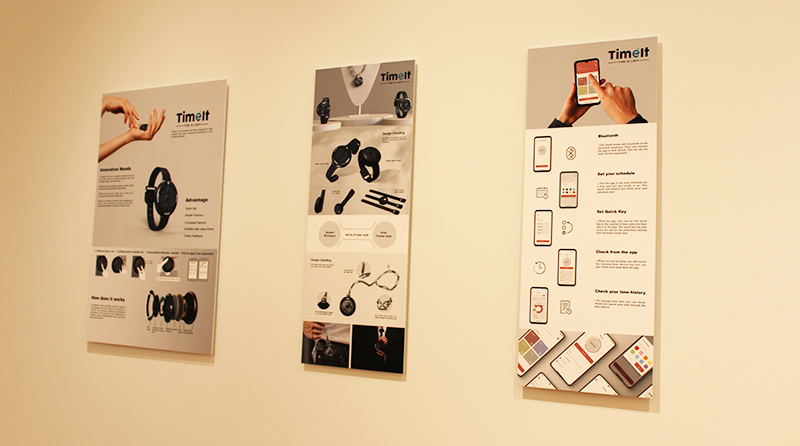
Photo by Debra Domal.
Faithful Oladeji’s design of an Illinois Interpretative Center, see below and in the top image, incorporates a VR experience as well as in-person model. Its brings together culture, technology, and nature in new and unexpected ways.
An interpretive center is a place focused on disseminating knowledge about natural and/or cultural heritage. The main purpose of this proposal is to provide an indoor gallery space for changing exhibitions about the campus, the broader Illinois landscape, and plant research being conducted at the [Illinois] This facility will also serve as a space for class meetings, small lectures, and other events.

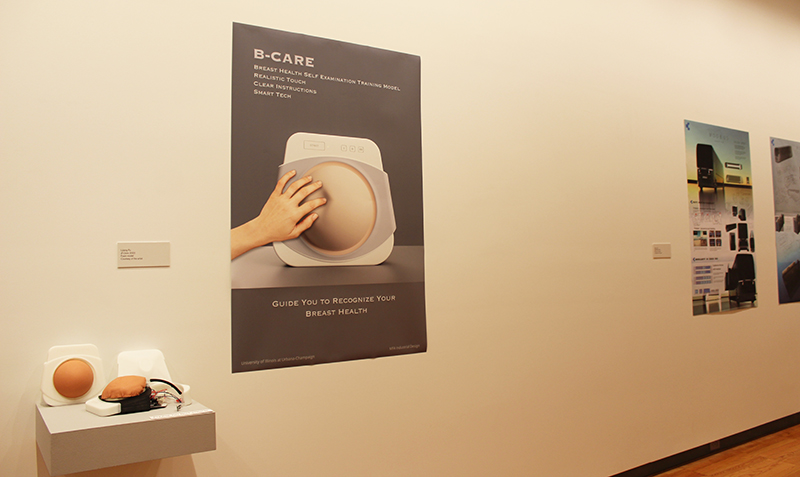
Photo by Debra Domal.
Finally, Lijiang Fu’s B Care offers lifesaving new smart technology for improving self-breast exams.
Moving from industrial design to studio art, Nathan Grimes’ installation “explores avenues of nonrepresentational abstraction,” and employs ” elements of chance, improvisation, and repetition to create complex yet seemingly minimalistic compositions.”
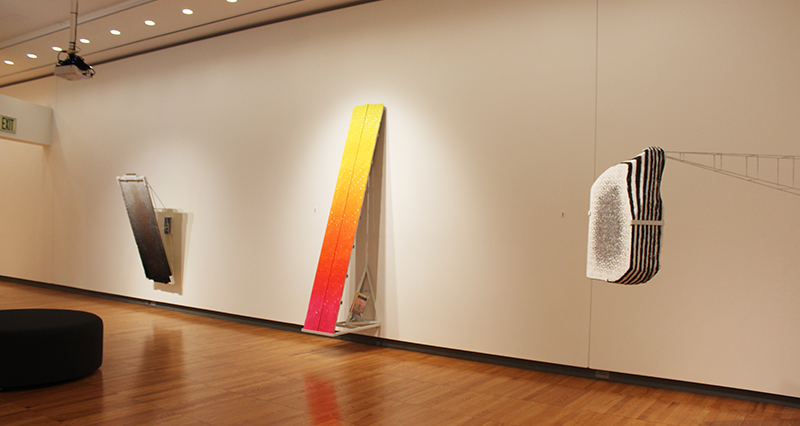
Photo by Debra Domal.
Grimes describes this approach here:
“Simple patterns overlap to create complex structures. Discrete forms deconstruct and reassemble. The resulting work, albeit abstracted, alludes to the conflicts and contradictions of reconciling self with society. Increasingly aware of my own personal boundaries, I aspire to vulnerability and philosophical openness in an often polarized world.”

Photo by Debra Domal.
Sydney Vize’s work invites us into in-between spaces in order investigate the deeply personal process of reconciling our own contradictory thoughts and behaviors.
Vize shares:
“The objects that I make are created to exist in the gaps between things that I have trouble reconciling, like my feminism and the honest pleasure that I can feel from engaging with fraught systems in the ‘right’ way (wearing makeup, losing weight, wanting children). I’ve been interested for a long time in devices that promise to publicly present an improved body, and the meshing of public/private existence that occurs when occupying a shell of such objects. How do I understand myself through my body, and how do I understand myself through other people? Through these methods of manipulating my materials, I’m hoping to illustrate the gaps between knowing and existing that I feel, and in so doing find a better way to understand multiple contradicting realities at once.”
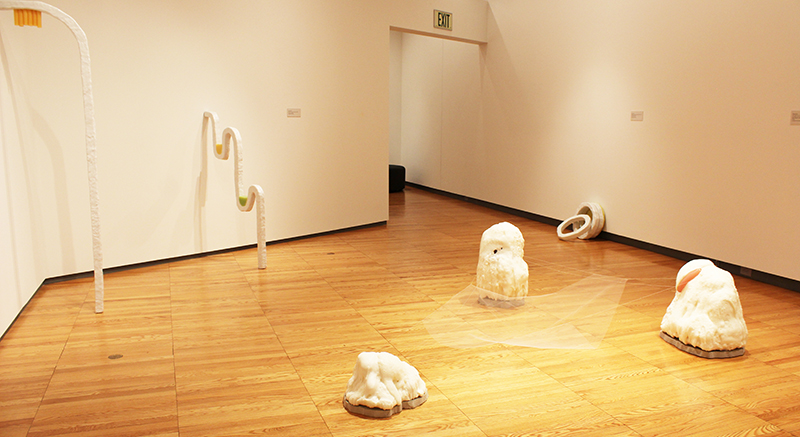
Photo by Debra Domal.
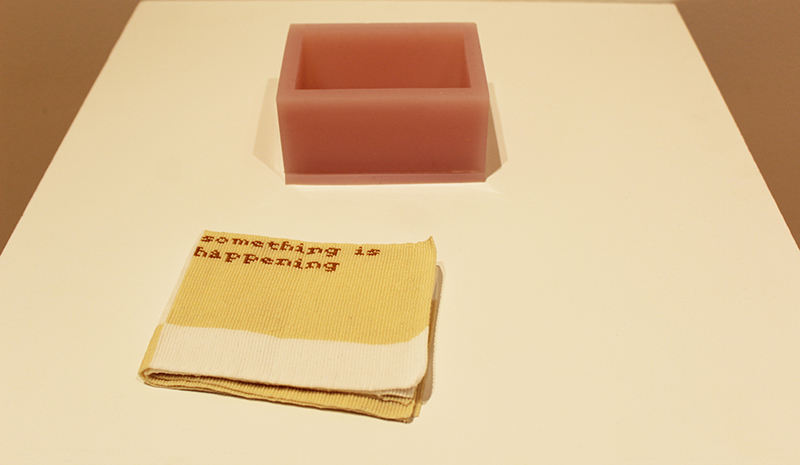
Photo by Debra Domal.
I have been long been waiting for my chance to experience Salem Turchan’s Museum of Gender of Divination, which, I’m thrilled to say, is as glorious in execution, as it is groundbreaking in conception.
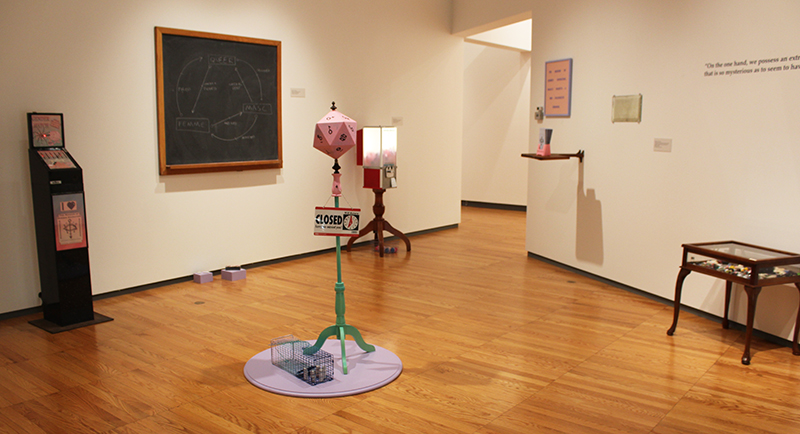
Photo by Debra Domal.
With its ornate antique furnishings and carnival-style constructions, the MGD evokes such a strong side show vibe that one could easily imagine a top-hatted barker/snake oil salesman inviting us to step right up to this miraculous assortment of oracles and divination. Awash in baby pinks and blues, the MGD confronts us with our culture’s problematic binary gender reveal obsession.
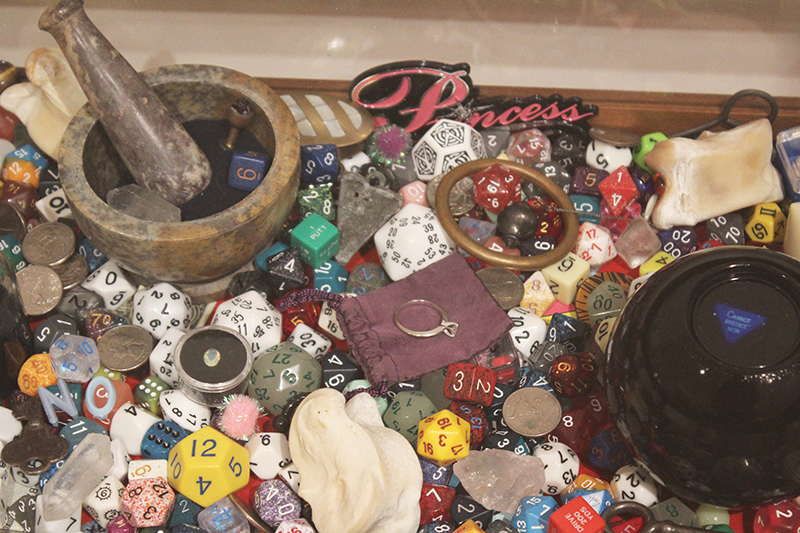
Photo by Debra Domal.
Turchan exposues our culture’s obsession with binary gendering (and misgendering), by showing the technology of gender divination for what it is: a ouija board held together by nothing more than a pencil, or a collection gaming dice and Magic 8 balls. If you look closely, you’ll notice that the MGD is closed. And that is a what if we should all get behind.
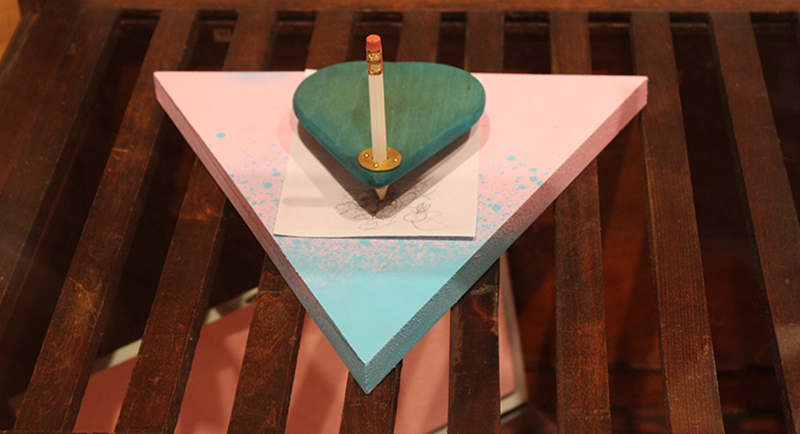
Photo by Debra Domal.
2022 Art + Design MFA Show
April 2nd-23rd
Krannert Art Museum
500 E Peabody
Champaign
Museum hours: T-Sa, 10 a.m.-4 p.m., Th 10 a.m.-8 p.m. during the semester.








